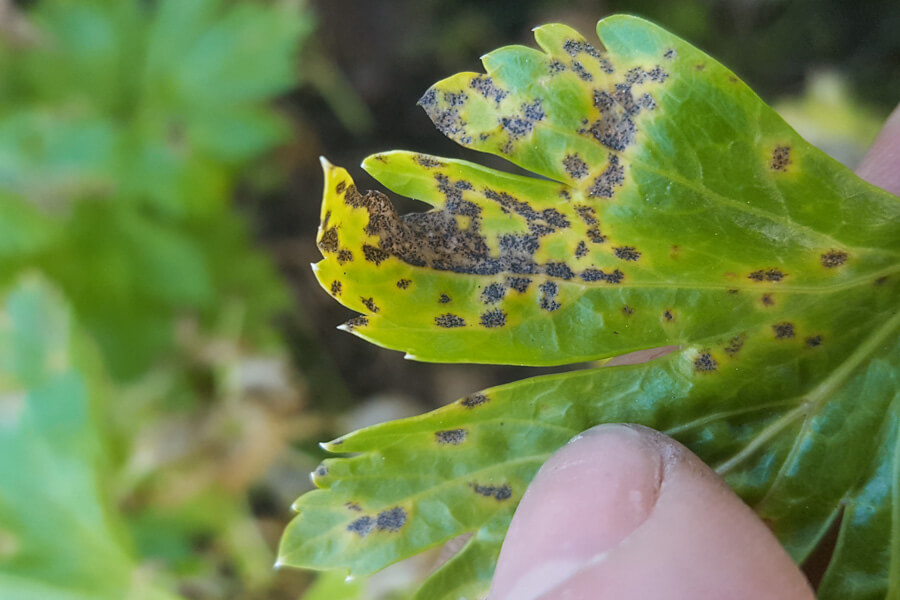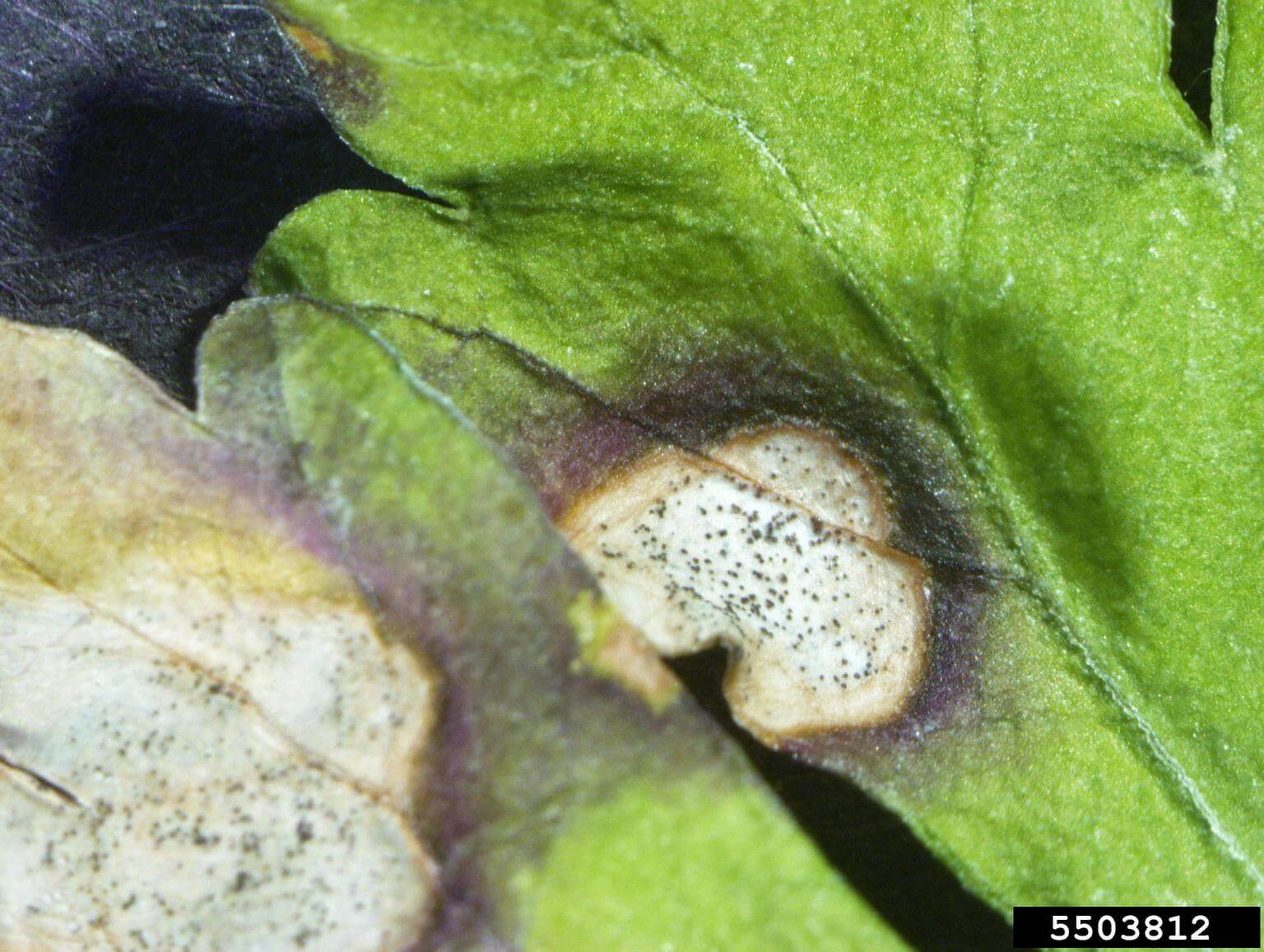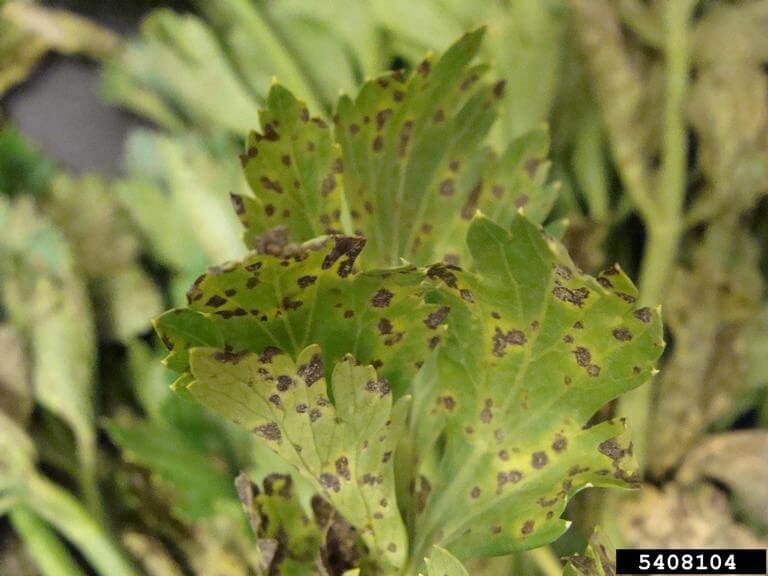
Septoriosis
Septoria
Septoria Apiicola
Pathogen:
Fungus
Type:
Risk to the plant:
HIGH



DESCRIPTION
WHO CAUSES IT?
Septoria apiicola is an ascomycete fungus that mainly affects celery plants. This pathogen is characterized by its ability to produce fruiting structures known as pycnidia, which release conidia that are responsible for infection. Conidia are dispersed through rainwater or irrigation, adhering to leaves and penetrating tissues through stomata or wounds. Subsequently, the fungus germinates and colonizes the leaf tissue, developing between the cells and causing necrosis in the affected tissues. During its development, the fungus can produce new generations of pycnidia, thus increasing the inoculum load in the environment. The persistence of infected remains in the soil acts as a reservoir for the pathogen, allowing its survival in adverse conditions and facilitating its spread in successive seasons.
SYMPTOMS
The disease caused by Septoria apiicola on celery is known as septoria. This disease manifests itself mainly in the leaves, although it can spread to other organs of the plant. Symptoms begin with the appearance of small chlorotic Taches that progress to brown Taches with yellow edges. As the infection progresses, the Taches merge, causing extensive necrosis of the leaf tissue and, in severe cases, premature defoliation. The reduction of the photosynthetic surface seriously affects the vigor and productivity of plants.
- Chlorotic Taches on leaves.
- Brown Taches with yellow edges.
- Fusion of stains.
- Extensive necrosis of leaf tissue.
- Premature defoliation.
- Reduction in plant vigor and productivity.


TEMPERATURE AND HUMIDITY
15-25°C
85-100%

HOW IS IT SPREAD?
Rainwater, Sprinkler irrigation, Cultivation tools, Infected plant material, Wind, Insects

HOW TO REMOVE IT?
Home remedies
There are no home treatments
Chemical treatments
• AZOXISTROBIN 20% + DIFENOCONAZOLE 12.5% [SC] P/V
• AZOXISTROBIN 25% [SC] P/V
• DIFENOCONAZOLE 25% [EC] P/V
• PIRACLOSTROBIN 6.7% + BOSCALIDE 26.7% ( ) [WG] P/P
Authorized treatments in organic farming
-
Insect allies
PREDATORY MITES
LADYBUGS
LACEWINGS
PARASITIC WASPS
HOVERFLIES OR PARASITIC FLIES
PREDATORY BUGS
There are no natural allies
Mycodiplosis oidii (predatory mosquito)
EFFECTIVE PRODUCTS TO ELIMINATE THIS DISEASE
Sponsored link
Sponsored link
Sponsored link
Sponsored link
Sponsored link
Sponsored link
Sponsored link
Sponsored link
Sponsored link
Effective against all types of fungi
Sponsored link
Sponsored link
Sponsored link
Sponsored link
Sponsored link
Sponsored link
Sponsored link
- Use certified pathogen-free seeds.
- Practice crop rotation with species not susceptible to Septoria apiicola.
- Remove and destroy crop remains and infected plants.
- Maintain an adequate distance between plants to improve air circulation.
- Avoid sprinkler irrigation to reduce the spread of spores.
- Apply specific fungicides following technical recommendations and local regulations.
- Regularly monitor plants to detect early symptoms and take immediate action.
- Maintain a balanced fertilization program to promote healthy plants that are more resistant to infections.
























